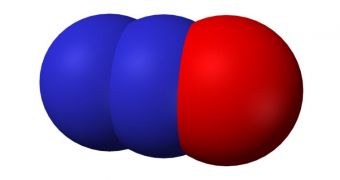Scientists from the Queensland University of Technology (QUT), in Australia, announce the creation of a new method for measuring the amounts of nitrous oxide (N2O) agriculture releases into the atmosphere. This gas is an extremely potent agent in sustaining and accelerating the greenhouse effect.
When analyzed over 100-year intervals, this gas is about 300 times more dangerous for the planet than carbon dioxide. Fortunately, it is currently released in much smaller amounts – 36 gigatons of CO2 compared to 3 gigatons of N2O.
This investigation was led by QUT Institute for Future Environments Smart Futures Fellow, professor Richard Conant. He explains that the new measurement technique will allow authorities and farmers to better manage their fields, while reducing the amount of pollutants they put in the air.
Conant says that the new approach is statistical, and that it can improve the accuracy of N20 release measurements by up to 65 percent. “Nitrous oxide contributes substantially to total global greenhouse gas emissions and in some countries it's a big part of total emissions,” the team leader explains.
Statistically speaking, agriculture is one of the main contributors to global warming, primarily through nitrous oxide released from fertilizers, and methane released by livestock. These two sources account for about 20 percent of all greenhouse gases that are released in the atmosphere yearly
“We're providing a tool that has significantly improved the accuracy of measuring N2O. Our hope is that this information will enable developing countries that lack detailed measurements to keep better track of N2O emissions,” Conant goes on to say.
Globally, more than 75 percent of all nitrous oxide in the atmosphere comes from fertilizers used in agriculture. The good news is that, though the gas can easily promote an intensification of the greenhouse effect, it still exists in rather small quantities in the air.
By applying the new tool to the current situation, the researchers determined that East Asia, Japan, Europe and the United States together contributed about 50 percent of all the anthropogenic N2O amounts, with the former USSR contributing about 13 percent of those amounts.
Details of the new investigation appear in a paper entitled “Regionally-differentiated estimates of cropland N2O emissions reduce uncertainty in global calculations,” which was published in a recent issue of the scientific journal Global Change Biology.
“In agriculture, producers generally have been trying to increase yields and productivity, but we haven't thought as much about externalities in terms of nitrogen pollution and greenhouse gases,” concluded Conant, who shared the 2007 Nobel Peace Prize with former US vice-president, Al Gore.

 14 DAY TRIAL //
14 DAY TRIAL //